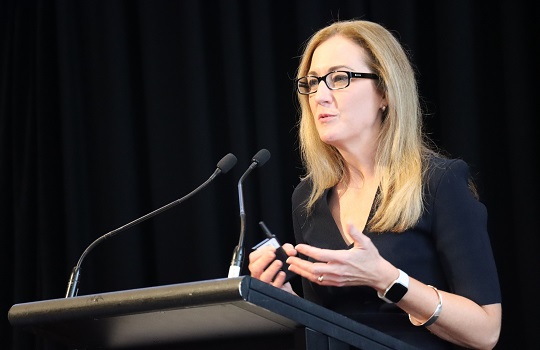
Like many FSIs in the throes of an enterprise-wide digital transformation program, AIA Australia has embraced an ‘agile tribe’ development model – utilising small, multidisciplinary and autonomous ‘squads’ working on a singular goal with whole-of-enterprise implications. The insurer has, however, gone one step further to granularise this agile model, establishing separate tribes dedicated to transforming key touchpoints across the customer journey, according to the company’s chief customer experience and operations officer Renae Smith.
One year into its three-year transformation program, Smith, speaking at FST’s Future of Insurance 2022 conference, said the insurer has created dedicated agile tribes to help innovate at key points of the customer journey: from the ‘buy’ or underwriting journey to the service and claims journeys.
“These tribes are long-running and multi-disciplinary teams,” she said, consisting of, for instance, a customer experience (CX) service designer, a digital product manager, operational SMEs, IT developers, IT architects, and finance specialists.
She praised the “power” of such multi-skilled teams to deliver innovation at pace.
“[There is] real power in having a multidisciplinary team who is centred around shared customer missions and… empowered to really drive that forward.
“The pace and velocity that you can move at when you get the right people together around a shared goal and you empower them to bring in and give their best [is significant].”
Tribes are also supported by AIA’s wider customer experience and digital functions, Smith said, as well as the company’s customer performance, governance and risk teams.
The impetus to create this journey-oriented tribal structure was a recognition that each of these customer journeys has multiple and unique stakeholders, whose “needs, preferences and jobs” are best catered for separately.
For Smith, stakeholders represent not only AIA customers, but also partners, such as advisers and group clients, as well as staff.
“If we don’t support our people to bring in and be their best at AIA, we won’t achieve our ambition for our customers.”
For instance, in the claims space, legacy remains a significant burden, with staff saddled with a preponderance of legacy overhang that ultimately impacts their capacity to service customers. It is also shaping their behaviours.
“Today, because of the constraints that they’re working in within these legacy systems [and] legacy processes, they tend to be more process and task-focused.”
This has been compounded with the acquisition of new businesses, including CommInsure back in 2019, which has effectively “doubled” AIA’s legacy systems burden.
“We’ve got multiple processes that are not harmonised, that are complex, that are manual and fairly limited digitisation of the customer experience.”
“We’re getting to [a point] – for our claims journey and similar to our other journeys – where we’ll have the enabling technology in place, moving to a single, cloud-based technology platform that, across the enterprise, will be ‘all on’ and that will be supported by AI and [will leverage] data and automation.”
“But of course, in claims that human interaction is so important.
“What that will then allow in turn is for our people to focus on more holistic claims management with the care and empathy that our claimants need and deserve.”
‘Front-to-back’ transformation
AIA’s customer journey optimisation program is part of the company’s broader enterprise transformation – and for Smith, “the vehicle by which we are delivering the transformational change”.
A key part of this customer journey optimisation, and a core operational framework for each tribe, is delivering “front to back transformation” – effectively, understanding what is first needed to deliver on the front-end (for those customers, staff and partners directly interacting with the platform), and then building the technology infrastructure to support these needs.
“We’ve taken a very deliberate approach around ensuring that we go ‘front to back’,” Smith said.
“And we’re very clear around what is the target state experience for the journey for our customers, our partners and for our people”.
“We’re looking into completely reviewing and re-engineering processes, looking at what processes we can eliminate, what processes we can all optimise, and where can we automate and digitise where it makes sense. And [we are] then looking at the underlying technology that’s required to deliver on that.”
“Often what you see… is customer-led transformations where you are either focused on the front-end and you’re doing your best to create an enhanced experience.
“But you’re working with all the legacy issues that you’ve got in behind there… where it’s a tech-led transformation and you’re rolling out a technology, and you’re doing your best to try to improve the user experience.”





